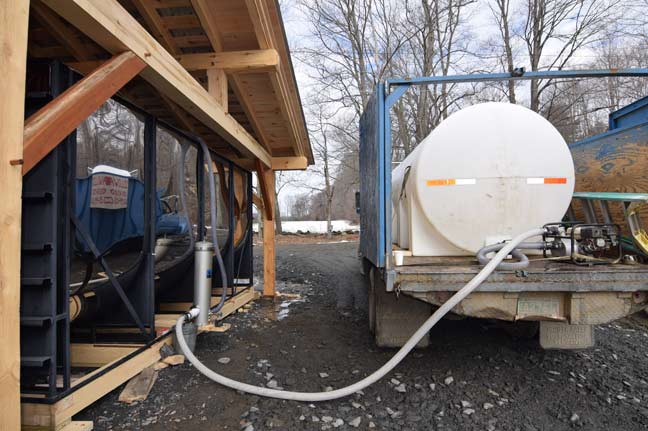Sap & Syrup
When buying sap, many factors can affect price
Among the variables: sap sugar concentration, sap quality
By MICHAEL FARRELL | JULY 8, 2017
-

sugarmaker, bulk, syrup, maple, taps, sugarhouse, sap
Many sugarmakers buy sap as a means of augmenting their own syrup production and getting better utilization of the equipment in their sugarhouse.
There are many factors that can and should affect the prices a sugarmaker is willing to pay for sap. These include sap sugar concentration, bulk syrup prices, sap quality, and how syrup production or revenues will be divided. For many years, many producers relied on a simple table that provided pricing per gallon for a range of sugar concentrations.
However, this approach has multiple problems and was never fully applicable to all sugarmakers. For instance, would you want to pay the same for 1.8 brix sap that produces a high-quality table grade syrup versus 1.8 brix sap that yields commercial, off-flavored syrup.
Furthermore, what if bulk prices were significantly different than expected due to a bumper crop or disastrous season- wouldn’t you want a way to adjust pricing based on the vagaries of production and bulk prices in a given year? I’ve also never met a maple producer who wants to pay the same for sap that needed to be picked up as sap that was delivered to the sugarhouse.
Finally, the price a sugarmaker is willing and able to pay should be tied to the processing capability of that sugarmaker. Someone who can make over 100 gallons of syrup an hour for less than $3/gallon in fuel costs should be able to pay much more for sap than someone who is only making a few gallons of syrup per hour and spends over $10 in fuel for every gallon of syrup produced.
Given all of these considerations, a few years ago I developed a sap-pricing table that can be customized for each individual sugarmaker’s situation. Prices are displayed in a table according to sap sugar content and bulk syrup prices by simply putting in the percentage of the syrup revenues given to the sap seller.
The default is often given as 50%, as seen in Figure 1, as this has been the most common distribution used in the industry. However, you can customize it to whatever works best for your situation by simply plugging in a different value for the percentage distribution. Given that many producers are now giving 60% (or even higher) of the revenues to the sap seller, Figure 2 uses the 60% distribution to demonstrate what a higher level of sap pricing may be.
You can download a Microsoft Excel file with the customizable sap pricing spreadsheet from www.cornellmaple.com This file also contains worksheets that you can use to determine how much money you can make per hour processing sap and worksheets to help keep track of sap payments.
In order to access the file, the webpage first asks you to put in your name and email address in order to download it, as I plan to eventually conduct further research on how people are using it, exploring the pros and cons of this method, and trying to gauge the effect of buying sap on the maple industry.
Over 2,000 sugarmakers are already using this spreadsheet throughout the maple industry, yet I believe everyone who buys sap should use this type of pricing method. I encourage you to give it a try, and as always, feel free to contact me at mlf36@cornell.edu or (518) 523 9337 with any questions.































